Beautiful Metro Stations in Berlin

Explore Berlin's unique Transportation: A Must-Have Guide for Photographers, Creators, and Aesthetic hunters
Berlin’s metro system is not just a transportation network—it’s an artistic and cultural journey beneath the city’s surface.
With a mix of historical architecture, avant-garde designs, and breathtaking mosaics, many of its U-Bahn and S-Bahn stations have become iconic locations for photography, video shoots, and creative content.
Whether you're a tourist looking for unique spots or a local searching for fresh inspiration, these metro stations will add character and vibrancy to your portfolio.
What you will get from this guide:
🗺️ Free Berlin guides
🚇 U-Bahn vs S-Bahn breakdown
🐻 List of Berlin must-see stations
🎫 Commuting etiquette
New to Berlin?
Check out and save my main Berlin guides! Whether you are just popping by for a quick visit, or whether you are planning a trip and trying to decide which time of the year fits your own travel plans best, these two guides will make your like much easy.
Understanding the Difference Between U-Bahn and S-Bahn
A Quick Guide for New Visitors
If you’re new to Berlin, you might wonder what the difference is between the U-Bahn and S-Bahn. Both are integral parts of the city’s public transport system, but they serve slightly different purposes and cover other areas. Here's a simple breakdown:
U-Bahn (Untergrundbahn)
U-Bahn stands for “Underground Railway,” though not all lines are completely underground.
Network: Primarily serves central and urban areas of Berlin. The U-Bahn network consists of 10 lines (U1 to U9, and U55), covering over 175 stations.
Frequency & Speed: Trains run frequently, especially in the city centre, with services running every 3 to 5 minutes during peak hours. Since the U-Bahn is designed for shorter trips within the city, it typically travels at a slightly slower speed than the S-Bahn.
Focus: The U-Bahn provides inner-city transportation, and takes passengers to key urban hubs, major attractions, and popular neighbourhoods.
S-Bahn (Stadtschnellbahn)
S-Bahn stands for “City Fast Train” and operates both above ground and underground, depending on the area.
Network: The S-Bahn covers a larger, more regional area than the U-Bahn. It connects central Berlin with its suburbs and outlying districts, making it perfect for longer trips across the city and into neighboring areas. It consists of 16 lines, with over 160 stations.
Frequency & Speed: S-Bahn trains are generally faster, designed for longer distances. They operate at intervals of 5 to 10 minutes during peak times, connecting outer areas like Potsdam or the airport to the city center.
Focus: The S-Bahn connects broader metropolitan areas and provides faster travel between suburbs and the city centre, making it ideal for those venturing further out.
Key differences
Coverage: U-Bahn is more localized to central Berlin; S-Bahn connects central areas to the outskirts and beyond.
Type of Journey: U-Bahn is for shorter, intra-city trips; S-Bahn is for longer, cross-city or regional trips.
Visual Difference: U-Bahn trains are smaller, more compact, and often yellow. S-Bahn trains are larger and typically red and yellow.
Most beautiful metro stations in Berlin
1. U-Bahn: Wittenbergplatz
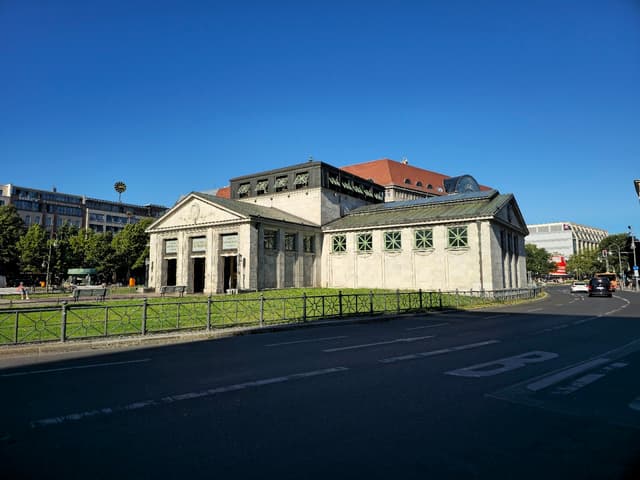
One of Berlin’s oldest stations, Wittenbergplatz is a gateway to the world-famous KaDeWe department store. The station’s classic design features elegant Art Nouveau elements, tall archways, and vintage-style signs that evoke early 20th-century Berlin.
2. S-Bahn: Alexanderplatz

A central hub, Alexanderplatz offers incredible photo opportunities with its vast, open spaces and urban modernist aesthetic. The interplay of light, steel, and glass, along with the busy crowds, creates dynamic scenes perfect for street photography.
3. U-Bahn: Hermannplatz

This station is a visual marvel with its grand arches, towering pillars, and high ceilings. Designed by Alfred Grenander, it blends function and elegance, resembling an underground palace. Its sheer scale and art-deco style make it ideal for wide-angle photography.
4. U-Bahn: Potsdamer Platz
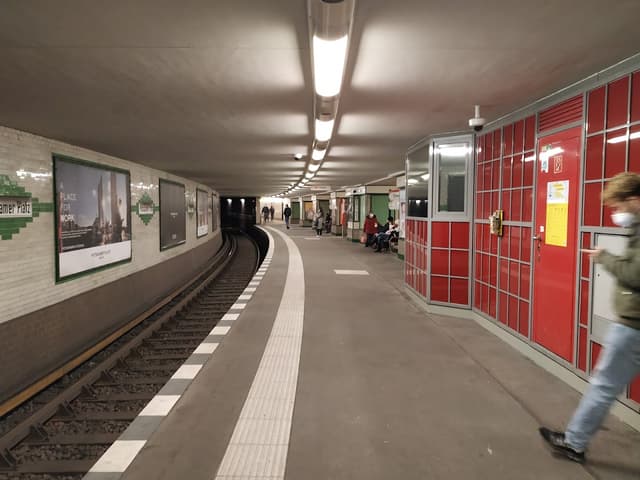
An underground station that feels like an architectural time capsule. With its clean lines, concrete structures, and industrial design, Potsdamer Platz offers striking modern compositions and echoes Berlin’s evolution from the Cold War to the present.
5. U-Bahn: Rathaus Spandau
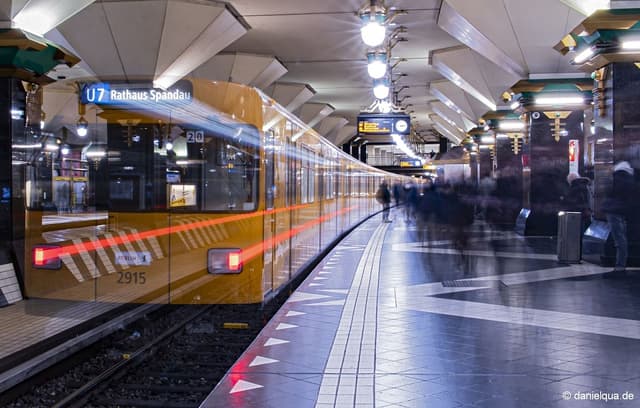
6. S-Bahn: Westhafen
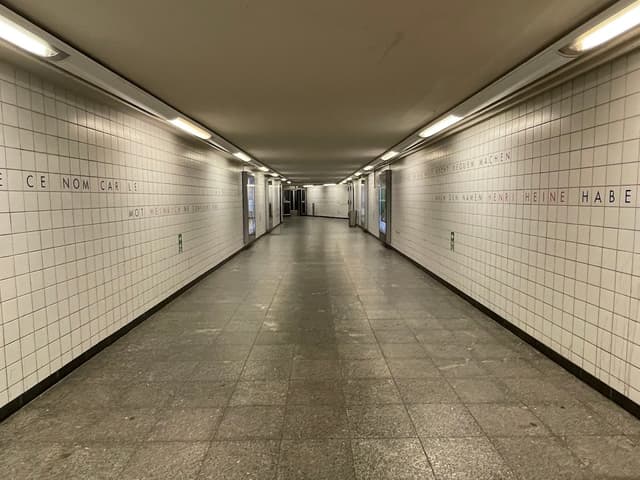
This station is famous for its striking blue wall mosaics with quotes in over 30 languages, turning the station into a symbolic place of diversity. The rich, deep tones and minimalistic lighting provide a unique and cultural backdrop for photos.
7. U-Bahn: Bundestag
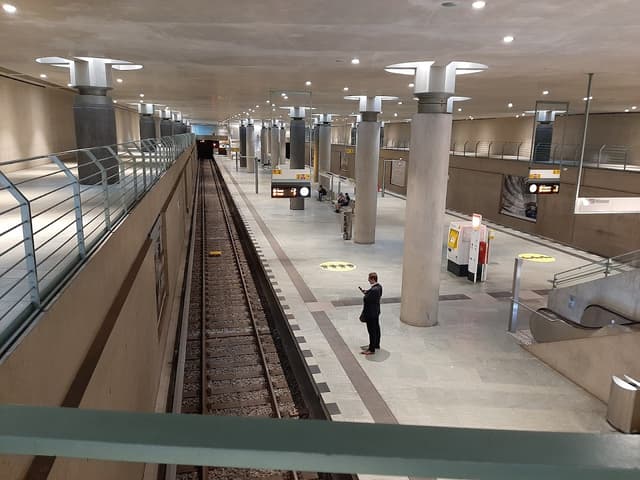
Located directly under the German Parliament, Bundestag is a masterpiece of modern architecture. The station's sleek design, characterized by stainless steel and futuristic lighting, reflects Berlin’s political core, making it a powerful space for contemporary photography.
8. U-Bahn: Oberbaumbrücke
The bridge connecting the stations features a Gothic architectural design that makes it one of Berlin’s most photogenic locations. The elevated U-Bahn track above the Spree River offers incredible views of the city skyline and the iconic TV tower,(between Schlesisches Tor and Warschauer Straße).
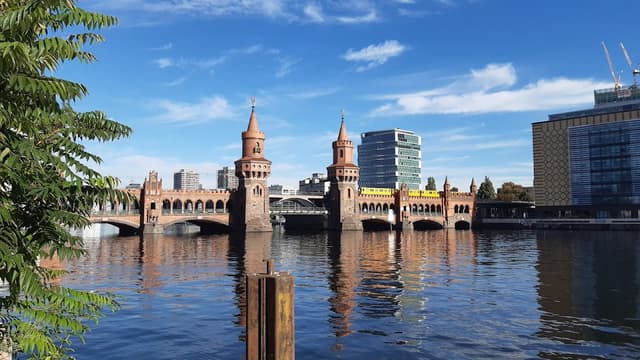
9. U-Bahn: Krumme Lanke
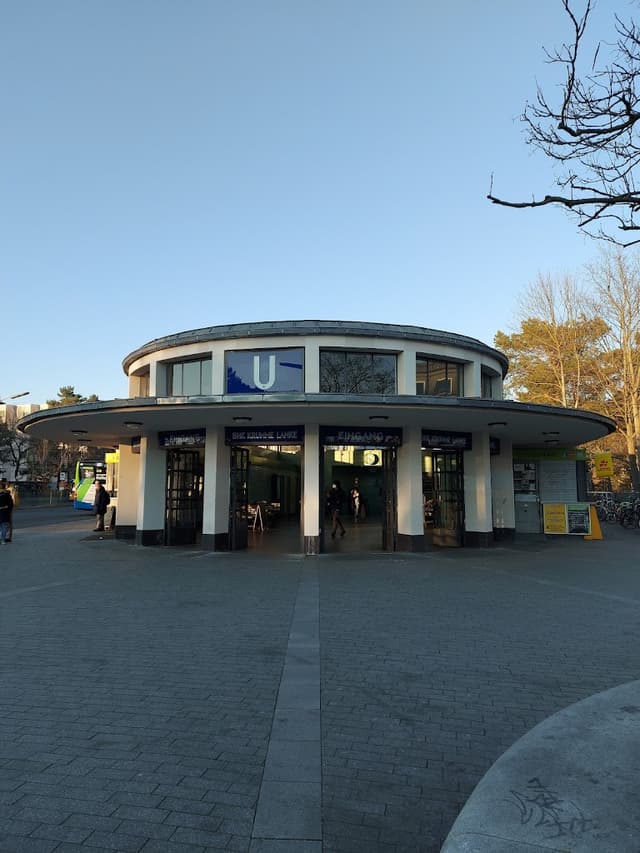
A peaceful, forested retreat at the far reaches of the U3 line, Krumme Lanke station offers charming red-brick architecture amidst nature. The nearby lake and serene surroundings are perfect for those seeking a contrast to urban Berlin.
10. S-Bahn: Hackescher Markt
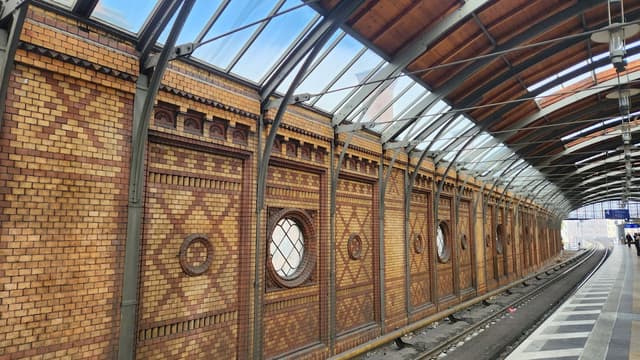
One of the city’s busiest and liveliest areas, the Hackescher Markt station is an aesthetic blend of old and new. The ornate, historical facade combined with its bustling, cosmopolitan atmosphere makes it a fascinating location for both portrait and street photography.
11. U-Bahn: Zoologischer Garten
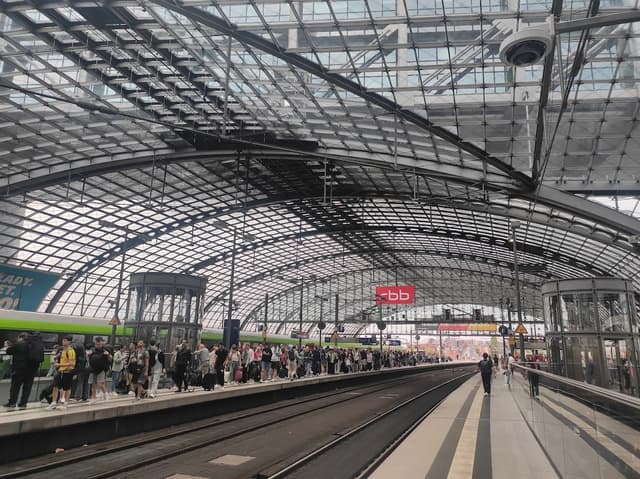
This iconic station, with its vintage neon signs and historical significance, is perfect for capturing Berlin’s eclectic mix of modernity and nostalgia. The nearby Berlin Zoo adds a quirky and unexpected element to your content.
12. U-Bahn: Museumsinsel
Offering a stunningly designed night sky ceiling adorned with fairy-like lights that imitate the stars, Museumsinsel offers a visual connection to Berlin’s rich cultural heritage. The station’s detailed design reflects the art and history of the Museum Island, making it a beautiful stop for architectural photography.
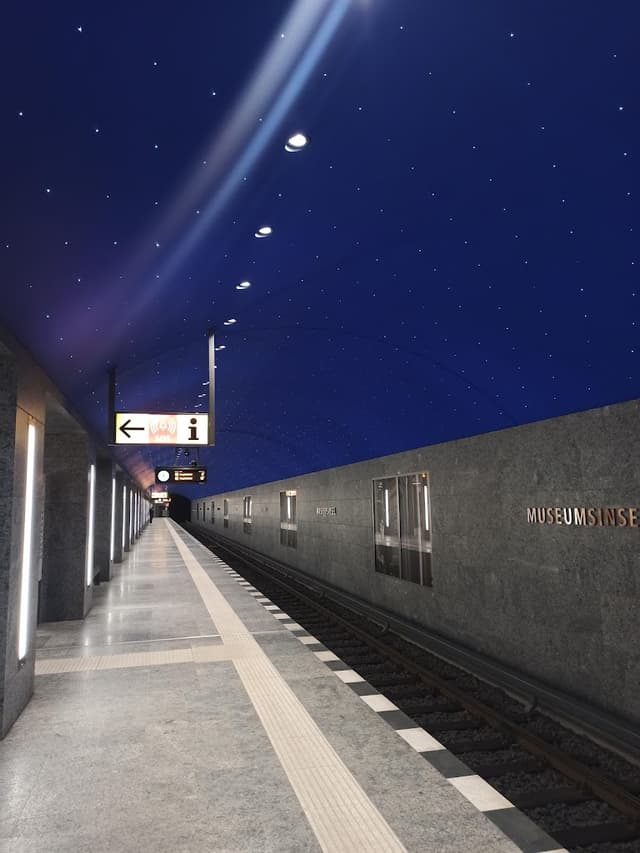
Between the bustling street level and the subway platform, there lies a striking space adorned with dark stone tiles and illuminated by bright lights, evoking the ambience of the interior of a futuristic spaceship.
13. U-Bahn: Hohenzollernplatz
U-Bahn: Hohenzollernplatz
An architectural gem on the U3 line, Hohenzollernplatz is known for its striking pink and red brick façade with tall, narrow windows that give it a cathedral-like appearance.
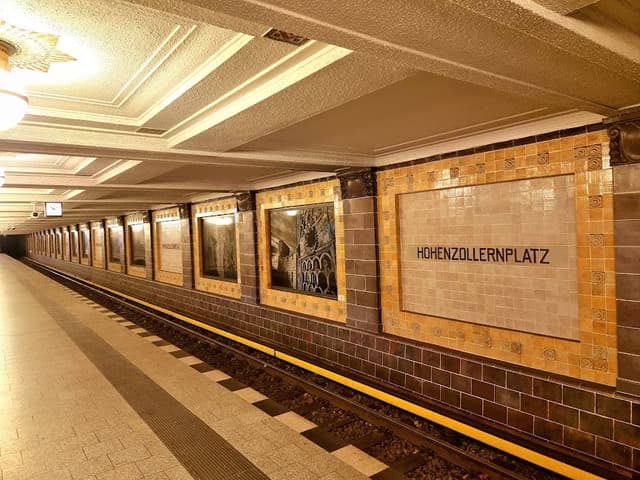
The station’s interior is equally stunning, featuring unique tilework and art-deco elements that transport you back to the early 20th century. Its blend of Gothic and modernist design makes it a perfect location for capturing dramatic and atmospheric shots, especially with the station’s warm, ambient lighting.
Basic Rules and Guidelines for Riding Public Transportation in Berlin
By keeping these basic rules in mind, you’ll not only blend in with the locals but also enjoy a more comfortable and stress-free ride through Berlin’s excellent public transport system. Whether you’re commuting or sightseeing, following these guidelines helps keep the city’s U-Bahn and S-Bahn running smoothly for everyone.
Here’s what you need to know before hopping on board:
1. Ticketing System
Berlin’s public transportation uses a unified ticketing system across all modes of transport (U-Bahn, S-Bahn, buses, and trams), but there are a few details to keep in mind:
Ticket Zones
Berlin is divided into three fare zones: A, B, and C. Most tourist areas are in zones A and B, but if you’re travelling to the outskirts or beyond the city (e.g., to Potsdam), you’ll need an ABC ticket.
Special Tickets
If you’re traveling with a dog or a bike, you’ll need to purchase an additional ticket.
🐩 Dog Ticket: A small dog that fits in a carrier travels for free, but larger dogs require their own ticket (half fare).
🚲 Bike Ticket: You need to purchase a special bike ticket (Fahrradkarte) to take your bicycle on the U-Bahn or S-Bahn. Look for bike symbols on train carriages where bikes are allowed.
Validation
Don’t forget to validate your ticket before boarding! There are validation machines (yellow or red boxes) at the entrance of every U-Bahn station or on the platform for the S-Bahn. If your ticket isn’t stamped, it’s considered invalid.
2. Designated Areas for Wheelchairs, Strollers, and Bikes
To ensure accessibility and smooth boarding, the U-Bahn and S-Bahn have specific carriages designated for certain groups:
Wheelchairs and Strollers (Baby Trolleys):
These passengers should board through the designated doors, usually marked with wheelchair symbols, which are often located in the middle of the train. These cars have more space and are equipped with ramps for easier access.
Bicycles:
Bikes are allowed in certain cars, typically the front and back sections of the train. Look for the bicycle symbol to find these areas.
3. Commuting etiquette
Berliners take public transport etiquette seriously, and one of the most important rules is to let passengers leave the train first before entering.
Queue on the Sides: When waiting for the train, you’ll notice that locals tend to stand on the sides of the doors rather than directly in front of them. This creates space for passengers to exit easily. Once everyone has disembarked, you can board.
Be Patient: It’s considered impolite to rush into the train or block the doors. Wait your turn, and avoid pushing when boarding.
4. Keep the Doorways Clear
When standing inside the train, make sure to avoid blocking the doors. Stand to the side so passengers can get on and off quickly and smoothly. If the train is crowded, move further inside the car to make room for others boarding.
Train doors in Berlin close automatically and sometimes quickly. There’s usually a sound or light warning before the doors close, but it’s best to step back if you hear it. For safety reasons, never try to force open the doors once they begin to close.
All aboard!
The home for unique & authentic travel

